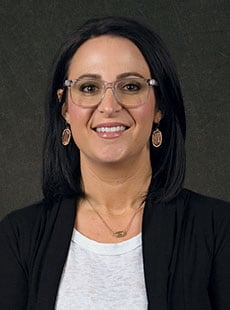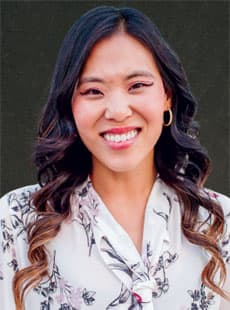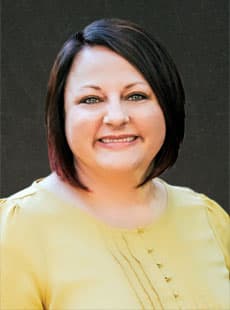 Course Introduction
Course Introduction
Core Standards of the Course
Strand 1
Students will differentiate between fashions in historical periods.
Standard 1
Recognize valid methods for identifying historic fashions.
Standard 2
Identify fashions from early time periods of clothing.
-
Egyptian – 3100 BCE to 30 BCE (before common era) - draped clothing made of linen.
-
Greek-1000 BCE to 1 ACE (after common era) - Homemade loose and flowing; chiton, himation.
-
Roman- 700 BCE to 410 ACE Mimicked the Greeks - a lighter weight fabric; toga, tunic.
-
Medieval - 449 to 1500 Layers, head coverings; corsets, kirtles.
-
Renaissance -1459 to 1500 Long gowns and doublets of velvets, brocades and linen tunics, hose for men.
-
Elizabethian/Tudor style 1509 to 1603 – Corset gowns, ruffled collars, slashing, codpieces.
-
Broque style- 1604 to 1682 – Softer collars, floppy brimmed hats, high waist and hose replaced with breeches.
-
Georgian Style 1714 to 1830 Powdered wigs, panniers, long tight breeches and high heels for men.
-
Regency 1811 to 1837 Light weight dresses, empire waist, Men’s clothing became practical for riding.
-
Victorian- 1837-1901 Women dresses were pale and simple. Men wore bold and bright colors.
Standard 3
Influential people in fashion history.
-
Elizabeth I: Queen of England 1558-1603
-
Louis XIV: King of France 1643-1715
-
Marie Antoinette: Queen of France 1775-1793
-
George Bryan “Beau” Brummel
-
Jacqueline Kennedy Onassis
-
The Beatles
Standard 4
Review specific styles in the 20th century.
-
1890’s – Victorian Era.
-
1900’s – Industrial Revolution Era. Duster coat
-
1910’s – WWI Era.
-
1920’s – “Roaring ‘20’s” Era.
-
1930’s – Depression Era.
-
1940s – WWII Era.
-
1950s – Rock n’ Roll era. Teenagers become their own class and have money to spend.
-
1960s – Civil rights Era. The ‘Mod’ look.
-
1970s – Hippy to Disco Era. Unisex.
-
1980s – Yuppie Era. Logo wear, designer jeans.
-
1990s – The Dot Com Era. rejection of fashion, grunge.
-
2000s – Wired generation.
-
2010s – Social media Rise of androgyny.
Strand 2
Students will define Fashion Products and Research terms.
Standard 1
Define fashion products and research terms.
-
rag trade - the slang term for the garment industry.
-
product mix - the total selection of goods and services that a company makes or sells.
-
product assortment - the range of items or merchandise within categories that a company sells. Ex of category: Dresses
-
merchandise information system - a system that produces, stores, and analyzes information that enables fashion marketers to make decisions about merchandise for sale.
-
market research - the systematic gathering, recording, analyzing, and presentation of information related to marketing goods and services.
-
survey method - a research method that involves gathering information from people through surveys or questionnaires.
-
observation method - a research method that involves watching people and recording consumer behavior by cameras, individuals, or internet tracking for example through cookies.
-
experimental method - a research method whereby a researcher observes the results of changing one or more marketing variables while keeping other variables constant.
-
focus group - a panel of six to ten consumers who discuss opinions about a topic under the guidance of a moderator.
-
Market segmentation - dividing the total market into smaller groups and analyzing each group by specific characteristics.
-
Target Marketing - the specialized niche of the market to whom the company wishes to make the greatest appeal.
-
Target-Market Research - ongoing process used to gather and analyze information that relates to specific groups of customers or target market.
-
Decide on a potential target market for a fictitious store and create a survey consisting of 10 questions to find potential interest in that store.
-
Create an actual display using fashion items OR create a miniature window display in a box.
Strand 3
Students will explore entrepreneurial options in the fashion industry.
Standard 1
Students will explore the sequence of steps in establishing a business plan.
-
Introduction:
-
Marketing
-
Finance & Management
-
Operations
-
Concluding Statement
- Summarize your business goals and objectives and express your commitment to the success of your business. Once you have completed your business plan, review it with a friend or business associate and professional business counselor
- Remember the business plan is a flexible document that should change as your business grows.
Standard 2
Analyze how to price a product for sell.
-
Material Costs - the amount of money you spend on raw materials needed to createa product.
-
Labor Costs - the number of hours required to make your product and the hourly rate associated with those hours.
-
Overhead Costs - any further expenses required for the operation of your business. (equipment, utilities, rent, insurance, taxes)
Standard 3
Students will be able to explain the basics of the 4P’s of marketing.
-
Product - Any goods, services, or ideas that we wish to sell.
-
Place – Distributing the right product to the right place at the right time in the right amount and in the right condition.
-
Price - Determining a dollar amount at which we can sell the product.
-
Promotion - Making potential customers aware of a product in a positive way so they will want to buy it.
Standard 4
Understand the basics for using credit for business financing.
-
Interest rate - The proportion of a loan that is charged as interest to the borrower, typically express as an annual percentage of the loan outstanding.
-
Personal guarantee - Individual agrees to be responsible for the financial obligations of a debtor or borrower to a lender, if the debtor or borrower fails to pay an amount owing under the loan agreement.
-
Loan term - Monetary loan that is repaid in regular payments over a set period of time. Term loans usually last between one and ten years but may last as long as 30 years in some cases. A term loan usually involves an unfixed interest rate that willadd additional balance to be repaid.
-
Ability to repay - An economic principle stating that the amount of tax an individual’s pay should be dependent on the level of burden the tax will create relative to the wealth of the individual.
Strand 4
Students will apply knowledge of merchandising to market a fashion product.
Standard 1
Some examples could include:
Workplace Skills
Students will develop professional and interpersonal skills needed for success in the fashion industry. Incorporated throughout the course.
Standard 1
Determine the difference between hard skills and soft skills.
-
Hard Skills - Hard skills are specific, teachable abilities that can be defined and measured.
-
Soft Skills - Personal attributes that enable someone to interact effectively and harmoniously with other people.
Standard 2
Identify soft skills needed in the workplace.
Standard 3
Contribute to the success of a group.
-
Resourcefulness & creativity
-
Critical thinking & problem solving
-
Time task and resource skills
-
Work Ethic


 UTAH EDUCATION NETWORK
UTAH EDUCATION NETWORK

 Justin
Justin Braxton
Braxton Dani
Dani Kayla
Kayla Katie
Katie Lora
Lora Rob
Rob Val
Val
